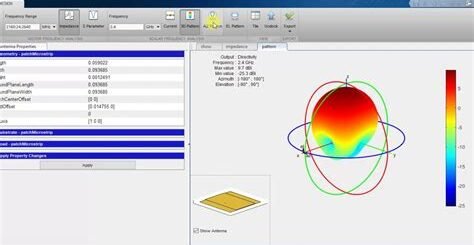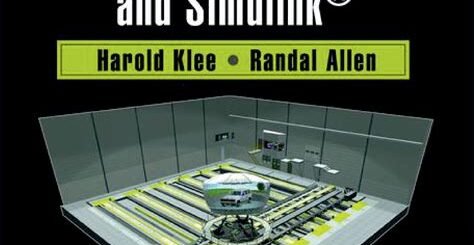Introduction to Control System Toolbox in Matlab
Are you interested in learning about control systems and how to use MATLAB to analyze and design them? In this blog post, we’ll introduce you to the basics of control systems and provide an overview of the Control System Toolbox in MATLAB. We’ll start by defining what a control system is and why it is important in various engineering fields. Then, we’ll dive into the features and functions of the Control System Toolbox, exploring how it can be used to design and analyze control systems effectively. We’ll also provide tips and tricks for efficient control system design in MATLAB to help you make the most out of this powerful tool. Whether you’re a student, researcher, or professional engineer, understanding and utilizing MATLAB’s Control System Toolbox can be beneficial for your projects and career. So, let’s get started and explore the world of control systems with MATLAB!
What is a Control System?
A control system is a system that manages, directs, or regulates the behavior of other devices or systems. It can be a physical system, such as a thermostat that controls the temperature of a room, or a software system, such as the control system used in an aircraft to maintain its altitude and heading. In simple terms, a control system manages the output of a system by manipulating the input.
Control systems can be found in various applications, including engineering, biology, economics, and social systems. They are used to ensure that a system behaves in a specific way, despite changes in its environment or input. For example, a cruise control system in a car maintains a constant speed, regardless of changes in road incline or wind resistance.
There are two main types of control systems: open-loop and closed-loop (feedback) systems. Open-loop control systems operate without any feedback, while closed-loop systems utilize feedback to achieve the desired output. Feedback allows a control system to monitor the output and make adjustments to the input in real-time, improving the system’s performance and accuracy.
Overall, a control system is essential for automation, stability, and precise control of various processes and devices. It plays a crucial role in modern technology and is a fundamental concept in engineering and science.
Understanding the MATLAB Control System Toolbox
When it comes to control systems, the MATLAB Control System Toolbox is an essential tool for engineers and researchers. This toolbox provides a wide range of functions and tools for designing and analyzing control systems, making it invaluable for anyone working in the field of control engineering.
One of the key features of the Control System Toolbox is its ability to handle various types of control systems, including continuous-time, discrete-time, and multi-input multi-output (MIMO) systems. This versatility makes it suitable for a wide range of applications, from simple feedback control to complex multivariable systems.
In addition to its diverse system support, the Control System Toolbox offers a set of functions for linear system analysis, such as linearization, pole placement, and frequency response analysis. These functions provide engineers with the necessary tools to analyze the behavior of their control systems and make informed design decisions.
Furthermore, the MATLAB Control System Toolbox includes tools for designing and tuning control systems, such as PID controllers and state-space controllers. These tools enable engineers to implement various control strategies and optimize the performance of their systems.
Key Features and Functions of the Control System Toolbox
The Control System Toolbox in MATLAB is a powerful tool for analyzing and designing control systems. It provides a wide range of key features and functions that make it a valuable resource for engineers and researchers in the field of control systems.
One key feature of the Control System Toolbox is its ability to work with both continuous and discrete time systems. This flexibility allows users to analyze and design control systems for a variety of applications, from simple to complex.
Another important function of the Control System Toolbox is its robust set of tools for linear system analysis. These tools allow engineers to easily analyze the stability, transient response, and frequency response of a control system, providing valuable insights into its behavior.
Additionally, the Control System Toolbox offers advanced design and tuning tools for controllers, including PID controllers and robust controllers. These tools enable users to optimize the performance of a control system and ensure that it meets the desired specifications.
Creating and Analyzing Control Systems with MATLAB
Creating and Analyzing Control Systems with MATLAB
Creating and analyzing control systems with MATLAB is a crucial aspect of engineering and design. The MATLAB Control System Toolbox provides engineers and scientists with the necessary tools to design, model, and analyze control systems for a wide range of applications. With the Control System Toolbox, users can create dynamic models of systems, analyze system behavior, and design controllers to meet specific performance requirements.
Matrices and Transfer Functions are key components in creating and analyzing control systems with MATLAB. The Control System Toolbox allows users to represent system models using state-space and transfer function representations. This enables engineers to easily manipulate and analyze system dynamics, as well as design control systems to achieve desired performance objectives.
Moreover, the frequency response analysis capabilities of the Control System Toolbox are essential in understanding the behavior of control systems across a range of frequencies. Engineers can use MATLAB to perform frequency domain analysis, plot system frequency response, and design controllers to achieve desired frequency domain specifications.
Ultimately, the Control System Toolbox in MATLAB provides engineers with a comprehensive set of tools for creating and analyzing control systems. From modeling dynamic systems to designing controllers, MATLAB offers a versatile platform for engineers and scientists to tackle complex control system design challenges.
Tips and Tricks for Efficient Control System Design in MATLAB
When designing control systems in MATLAB, it’s important to use efficient methods to ensure optimal performance and accuracy. One tip for efficient control system design is to make use of the built-in Control System Toolbox, which provides a wide range of functions and tools for designing, modeling, and analyzing control systems.
Another trick is to take advantage of the various compatibility and integration features of MATLAB, which allow for seamless connectivity with other software and hardware, enabling more efficient system design and implementation.
It’s also important to optimize the performance of the control system by using techniques such as model reduction, where unnecessary complexity is eliminated to improve computational efficiency and speed.
Lastly, utilizing the interactive design and analysis tools in MATLAB can greatly enhance the efficiency of control system design, allowing for quick iteration and real-time adjustments to parameters and configurations.


